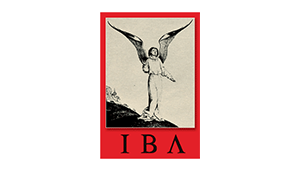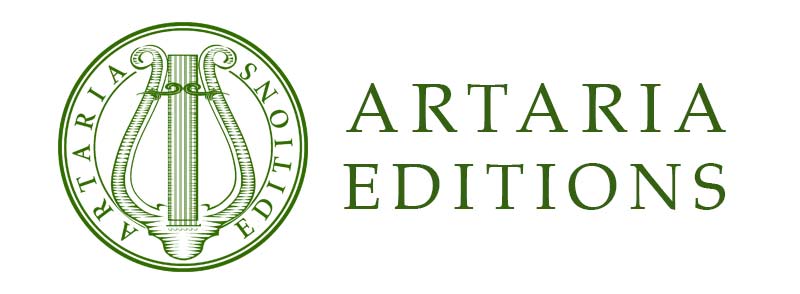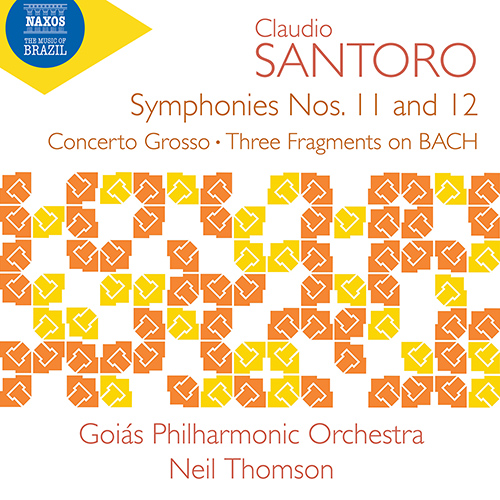From the Naxos Blog: Cláudio Santoro: Symphonies 11 and 12
November 11, 2022The previous edition of our Naxos blog focused on two symphonies that Brazilian composer Cláudio Santoro composed in the 1950s – the Fourth and Fifth – the latter written to mark the founding of the country’s new capital, Brasilia.
Santoro (1919–89) was a member of the Brazilian Communist Party, which brought him major problems during his artistic life and forced him into exile for extended periods. Persecuted by Brazil’s military dictatorship, he lived in Germany as a political refugee in the 1970s, during which time he served as professor of conducting at the Heidelberg-Mannheim Staatliche Hochschule für Musik.
Santoro returned to Brazil in 1978, when he was invited to set up the orchestra of Brasília’s Teatro Nacional; he subsequently became its first principal conductor. In tandem with this, he resumed his activities as professor of composition and conducting at the University of Brasília. Both the orchestra and his teaching work would be of central importance to him during the last ten years of his life.
This month sees the release of a new album featuring Santoro’s Eleventh and Twelfth Symphonies (8.574406), written during that decade, which are showcased in this blog. The Eleventh Symphony is one of the densest and most dramatic of Santoro’s 14-symphony cycle; the Twelfth is an unusual ‘sinfonia concertante’ for nine soloists and orchestra.
Written in 1984, the Eleventh Symphony was given its first performance in 1987. It’s a compact 3-movement work lasting less than 20 minutes. The first movement contrasts an air of desolation with more vibrant passages. Here’s the movement’s slow introduction featuring a plaintive oboe solo.
The second movement is a short, lively scherzo, in which the flamboyant writing showcases the woodwind, brass and percussion instruments. The involvement here of the entire orchestra comes in striking contrast to the linearity of the first movement.
The finale reproduces all the elements featured in the first two movements – the chromatic, desolate introduction, both the dense passages and agile unisons in the strings, the angular lines, the ostinato rhythms in the percussion, the rapid brass calls. All these overlap until the dramatic ending, when the orchestra suddenly disappears after a passage on pounding timpani that seems to recall the opening of Brahms’ First Symphony (Brahms was one of Santoro’s favourite composers). Maybe it was no coincidence, however, since the final bar of the manuscript is followed by the inscription: ‘Brahms House, 12–6–84, Baden-Baden, with anguish and longing …’.
In 1983, Santoro had been invited to write the competition pieces for the second Sul América Young Musicians of Brazil Competition, held in Rio de Janeiro. This commission led to a series of 15 Sul América Fantasias for solo instruments (‘Sul América’ refers not to the continent but to the insurance company that sponsored the competition). Santoro also wrote an optional orchestral accompaniment for each fantasia, probably so that the finalists or winners could perform them in that format.
Later that year, Santoro completed his Fantasia Concertante, which essentially brought together elements of those solo works, with orchestra, using transitional bars to allow the music to flow without a break. Never performed as Santoro had envisaged it, this work eventually became the basis for his Symphony No. 12, completed in 1987 and subtitled ‘sinfonia concertante for eight instruments and orchestra’ – the ninth soloist, the trombone, was added later.
Using the competition pieces as thematic material, Santoro expanded the orchestration, and indeed the whole role of the orchestra in the work. The opening movement begins with the solo violin and cello, which are heard together at first, then alternate with one another. Flute and clarinet follow the same procedure in the following section. The recapitulation of the first theme is entrusted to the viola, which is where our extract picks up.
Next comes a very short, lively, rather martial-sounding scherzo for just one solo instrument – the trumpet. We join the movement part-way through.
The third movement starts with the oboe solo which, initially upbeat, turns into the most lyrical episode in the symphony with a discreet orchestral accompaniment. A cadenza introduces the horn solo, which opens the second part of this movement. The last soloist, the trombone, returns to the horn’s initial material, but develops it in a more assertive and vibrant style.
Our two extracts respectively spotlight those oboe and trombone contributions.
Sadly, Santoro never heard his Twelfth Symphony performed. The work had to wait until 2019 to receive its premiere, which was given by the University of São Paulo Symphony Orchestra, under Catherine Larsen-Maguire, as part of the events organised to mark the centenary of the composer’s birth.
The works on this new Naxos album are performed by the Goiás Philharmonic Orchestra under Neil Thomson, the orchestra’s principal conductor and artistic director since 2014. In addition to the symphonies already discussed, the programme includes two other works: Santoro’s Concerto Grosso (1980), and his Three Fragments on B-A-C-H (1985). I’m going to play out with the last movement of the former, which is scored for string quartet and orchestra and was one of the first pieces he wrote following his return to Brazil in 1978. Although the work is relatively conventional in structure and design, certain aspects such as the use of tone clusters and aleatory elements are reminiscent of earlier phases in his career. Meanwhile, the edition of Santoro’s complete symphonies, fourteen in all, continues within the Naxos Music of Brazil series, which we hope you will enjoy exploring further.































